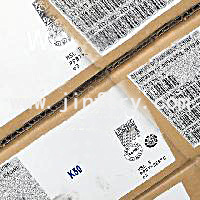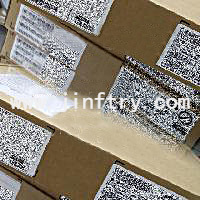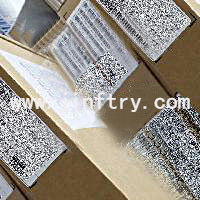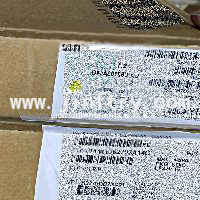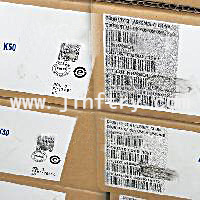Triac dimmer: Comprehensive analysis and application guide


What is a triac dimmer
Overview of triac dimmer
1. Basic introduction
Main features:
- Efficient energy saving: Reduce unnecessary energy consumption by adjusting the conduction time of current.
- High reliability: Use high-quality electronic components to ensure long-term stable operation.
- Wide dimming range: Can achieve brightness adjustment from 0% to 100%.
- Strong compatibility: Suitable for many types of lamps, including incandescent lamps, halogen lamps and some LED lamps.
Working principle of Triac dimmer
1. Bidirectional thyristor (Triac)
Definition: Bidirectional thyristor is a three-terminal semiconductor device that can conduct current in both directions and is commonly used in AC circuits.
2. Dimming process
Trigger angle: The bidirectional thyristor dimmer adjusts the output voltage by changing the trigger angle (i.e., the conduction angle). The smaller the trigger angle, the higher the output voltage and the brighter the lamp; the larger the trigger angle, the lower the output voltage and the smaller the lamp brightness.
Technical specifications of bidirectional thyristor dimmer
1. Electrical parameters
- Rated voltage: Usually 110V or 220V AC, depending on the application area.
- Rated current: Depending on the specific model, the rated current ranges from a few amperes to tens of amperes.
- Dimming range: Usually 0% to 100%, and some advanced dimmers support finer adjustments.
- Frequency: Applicable to 50Hz or 60Hz AC power.
2. Mechanical parameters
- Dimensions: The specific dimensions vary depending on the model, but the design is compact and easy to install.
- Installation method: Common installation methods include wall-mounted, embedded and panel-mounted.
- Interface type: Usually equipped with standard wire connection terminals, which is convenient for connecting power and lamps.
3. Environmental parameters
- Operating temperature: Usually between -20°C and +45°C, suitable for a wide temperature range.
- Protection level: Meets IP20 or higher protection level, can prevent dust and water intrusion.
- Anti-interference ability: Has good electromagnetic compatibility (EMC) and can work stably in complex electromagnetic environments.
Try to assemble a triac dimmer circuit yourself

By reading the part numbers, I learned that the following parts are used in this circuit:
- 250 kΩ linear potentiometer
- 75 nF film capacitor, rated at 600 V
- STMicroelectronics DB3 DIAC
- STMicroelectronics BTA12-600C triac
I used the SPICE models of DB3TG DIAC and BTA20-600CWRG TRIAC found on the STMicroelectronics website to perform PSpice simulations, and the circuit performed as expected in the simulation.
Application scenarios of triac dimmers
1. Home lighting
Bedroom: When reading at night, you can use a dimmer to reduce the light brightness to protect your eyes.
Kitchen: When cooking, you need a stronger light; when dining, you can use a dimmer to reduce the brightness to create a warm dining environment.
2. Commercial lighting
Office: Use dimmers to adjust light brightness, improve work efficiency and save energy.
Shopping malls: Use dimmers to adjust light brightness in different time periods and occasions to attract customers and save energy.
3. Stage lighting
Theater: Use dimmers to adjust light brightness during performances to create different scene effects.
4. Industrial lighting
Factory workshops: Use dimmers to adjust light brightness to meet the needs of different production links.
How to correctly select and use bidirectional thyristor dimmers
1. Selection recommendations
Application requirements: Select the appropriate model based on the specific voltage, current and dimming range.
Lamp type: Make sure the selected dimmer is compatible with the lamp type, especially for LED lamps, you need to choose a dedicated LED dimmer.
2. Installation steps
Preparation: Prepare the required tools and materials, such as screwdrivers, wire strippers, etc.
Disconnect the power supply: Before installation, make sure to cut off the power supply to avoid the risk of electric shock.
Connect the line: According to the product manual, correctly connect the power cord and the lamp line.
Fix the dimmer: Fix the dimmer in a suitable position according to the installation method.
Check the connection: Check carefully before powering on to ensure that all connections are correct and not loose.
3. Maintenance and care
Regular inspection: Check the working status of the dimmer regularly to ensure that there is no damage or looseness.
Cleaning: Keep the dimmer and its surroundings clean to avoid dust and dirt affecting performance.
FAQs about bidirectional thyristor dimmers
1. What are the advantages of bidirectional thyristor dimmers?
High efficiency and energy saving: By adjusting the conduction time of the current, unnecessary energy consumption is reduced.
High reliability: High-quality electronic components are used to ensure long-term stable operation.
Wide dimming range: Brightness adjustment from 0% to 100% can be achieved.
2. How to judge whether the dimmer needs to be replaced?
Appearance inspection: If the dimmer is found to have obvious physical damage, such as cracks, deformation, etc., it needs to be replaced.
Abnormal function: If the dimmer cannot adjust the brightness normally or has problems such as flickering, it needs to be replaced.
3. How to make the correct wiring?
Follow the wiring diagram: Strictly follow the wiring diagram in the product manual for wiring.
Ensure firmness: Make sure that the wires are firmly connected without exposed parts to avoid short circuits and electric shock risks.
4.What is the difference between a TRIAC dimmer and a LED dimmer?
TRIAC dimmer:
- Technology: TRIAC (triode alternating current) dimmers are the most common type of dimmer for incandescent and halogen bulbs. They work by controlling the phase angle at which the AC waveform is turned on, effectively reducing the average power delivered to the lamp.
- Compatibility: Mainly for resistive loads, such as incandescent and halogen lamps. They can sometimes be used with certain types of LEDs, but compatibility is not guaranteed and performance may vary.
- LED performance: When used with LEDs, TRIAC dimmers may cause flickering, humming, or poor dimming range due to the nonlinear characteristics of the LED driver.
LED dimmer:
- Technology: LED dimmers are designed specifically for LED lighting. They use more advanced electronics to provide smooth and reliable dimming.
- Compatibility: Optimized for LED loads, including those with built-in drivers. They can handle the lower wattage and different electrical characteristics of LEDs.
- Performance: Provides a wider dimming range, smoother dimming, and less potential for flicker or other problems than using a standard TRIAC dimmer with LEDs.
5.What is the difference between a TRIAC dimmer and an ELV dimmer?
TRIAC dimmer:
- Technology: As mentioned earlier, a TRIAC dimmer controls the phase angle of the AC waveform.
- Application: Best suited for resistive loads, such as incandescent and halogen bulbs. They can also be used with some magnetic low voltage (MLV) transformers, but this is less common.
- Voltage: Typically used in line voltage (120V or 230V) applications.
ELV (Electronic Low Voltage) Dimmer:
- Technology: ELV dimmers are designed for electronic low voltage (ELV) loads, such as LED drivers that require constant current or constant voltage.
- Application: Designed specifically for low voltage lighting systems, including many modern LED fixtures. They are better at handling the complex waveforms and lower power requirements of these systems.
- Voltage: For low voltage (12V or 24V) applications, usually through an external transformer.
- Performance: ELV dimmers generally provide better performance for LED lamps, offering a wider dimming range and smoother operation.
6.Is TRIAC dimming the same as leading-edge?
TRIAC:
Definition: Leading-edge dimming, also called leading-phase or TRIAC dimming, controls the point in the AC cycle at which current is allowed to flow. It cuts off the leading edge of the AC sine wave, which is why it is called "leading-edge"
So:
Yes, TRIAC dimming is the same as leading-edge dimming. The term "TRIAC" refers to the specific components used to achieve leading-edge dimming, while "leading-edge" describes the method of dimming.
7.What does TRIAC stand for?
Triac:
Full form: Alternating current triode
Function: TRIAC is a three-terminal semiconductor device that can conduct electricity in either direction when triggered. It is used in AC circuits to control the amount of power delivered to the load, making it ideal for dimming applications.
Operation: In a dimmer, the TRIAC turns on at a specific point in the AC cycle, allowing current to flow for part of the cycle, thereby reducing the average power to the load and dimming the lights.
Summary
Triac dimmer is an efficient electronic dimming device widely used in home, commercial, stage and industrial lighting systems. Its high energy efficiency, high reliability and wide dimming range make it an ideal choice for many applications. Through proper selection and use, its performance advantages can be fully utilized to meet the needs of different applications.
Statement:
All articles (images, texts, audio) on this site are uploaded and shared by users, or integrated from relevant internet sources, only for user's learning. If your rights are violated, please contact the administrator to delete! Link to this article: https://www.jinftry.com
MINIHAM1C12│ MM3Z5V1-AQ│ MMBZ5251BS-7│ MMP100FRF13K3│ MMSZ5248BS-7-F│ MNR18ERAPJ300│ MP6-1V-1V-1W-1W-4NN-00│ MPC8314VRAFDA│ MRF1-6-5-6-PJ-59U│ MS23ANA03│ MS27466T15B5A_156│ MS27473T10F35P-CGMSS3│ MS27656T25B1S│ MS3100E16-11S_529│ MS3100F2212S│ MS3100R20-4S_529│ MS3126F12-10PW-LC│ MS3454L28-17B│ MS46SR-14-870-Q1-R-NC-AN│ MS46SR-30-870-Q1-10X-10R-NC-FP│ MS4800B-20-0680-10X-10R-RM1│ MSMLJ100AE3│ MT41K256M16TW-125-P│ MTCB1R-010-010-01│ MTV1-2PS│ MXO45-2C-1M0000│ MXR-8PA-3PB-71│ N-255MG│ NJW4182U3-33-TE1│ NMH0515DC│ NSVBC144EPDXV6T1G│ NTP75N03R│ OPA234E-250G4│ OPA4991QPWRQ1│ OPB891L51Z│ OSTOQ231250│ P1206Z1002FBW│ P1330-563J│ P51-2000-S-B-M12-4-5OVP-000-000│ P51-500-A-F-D-20MA-000-000│ P51-750-S-H-D-4-5OVP-000-000│ P51-750-S-W-P-4-5OVP-000-000│ PA10│ PCA9512AD-112│ PCIE-098-02-S-D-RA│ PE2010JKM070R05L│ PF0698-684NLT│ PHP00805H3521BBT1│ PIC16F720T-I-ML│ PIC16LC620-04E-SO│ PK2-56R-T│ PL1368│ PM1210-330J-RC│ PPT2-0100GKX2VS│ PS240│ PT06P-20-16P│ PT7C5038A1-2GDE│ PTF65470R00FZBF│ PTH03030WAZT_95│ PZU20BL-315│ Q8R7BXXG02E│ R12P209D│ R5FBLKBLKFF0│ R6202450XX00│ R7S921043VCBG-BC0│ RBM43DCCH│ RC0603FR-0715R4L│ RC3216F1474CS│ RCEC7505000JB│ RCL061261K9FKEA│ RCP0603W1K00GEA│ RCS0402360RJNED│ REG101NA-5-250│ RER75FR453RCSL│ RF073M2STR│ RG1608N-3091-C-T5│ RK73G1ETTP1873F│ RK73H2BTTD4222D│ RLP021R540FA20│ RLR05C1503GSRE619│ RLR05C2673FSBSL│ RLR05C3322FSBSL19│ RLR05C5R10GSRE8│ RLR05C97R6FSBSL│ RLR07C10R0FSRE8│ RLR07C19R6FSRE5│ RLR07C3161FSB14│ RLR07C3743FPRE7│ RLR07C4221FSR36│ RLR07C9761GSB14│ RLR20C5230FSRSL│ RLR20C7500FSRE5│ RLR32C2700GPB14│ RMB1054R700JR15│ RMC18DTEI│ RMCF0402JT15R0│ RMCF2512FT1M02│ RMCF2512JT13K0│ RN4904-LXHF-CT│ RN50E3090BRE6│ RN55C1112BB14│ RN55C6571BBSL│ RN55C74R1BB14│ RN55D1604FRE6│ RN60C2460BB14│ RN60E3322FB14│ RN65C3572FRSL│ RN732ATTD3401C10│ RN732BTTD11R7F50│ RN732BTTD1601C10│ RN732BTTD93R1D100│ RN73H1ETTP2430F10│ RN73H1ETTP2461B25│ RN73H1ETTP9311C50│ RN73H1JTTD1181A25│ RN73H1JTTD2101B50│ RN73H1JTTD7060A05│ RN73H2ATTD1094F25│ RN73H2ATTD2290B50│ RN73H2ATTD2672B50│ RN73H2ATTD3442C25│ RN73H2ATTD4071C50│ RN73H2ATTD8061C50│ RN73H2BTTD5760C50│ RN73H2BTTD6343F100│ RN73H2ETTD2132B50│ RN73H2ETTD2700D10│ RN73H2ETTD3093C10│ RN73H2ETTD8451A25│ RN73R1ETTP2740F10│ RN73R1JTTD2323C50│ RN73R1JTTD3361B25│ RN73R1JTTD47R0F10│ RN73R1JTTD7322B25│ RN73R1JTTD8160A25│ RN73R2ATTD1002D100│ RN73R2ATTD4021B50│ RN73R2BTTD3441A05│ RN73R2BTTD4531F25│ RN73R2ETTD1092D10│ RN73R2ETTD1372D50│ RN73R2ETTD2741C10│ RN73R2ETTD3573F10│ RNC50H1433FSRSL31│ RNC50H1780FRB14│ RNC50H1983BSRE6│ RNC50H3361BSRSL│ RNC50H5422DSB14│ RNC50K2740FPR36│ RNC55H2741FSRE7│ RNC55H2743FRB14│ RNC55J1270BSRE5│ RNC55J1474BSRE6│ RNC55J2491BSRE865│ RNC55K3401FPRE6│ RNC60H3241FSB14│ RNC60J59R7BSB14│ RNC65H1960FRRE7│ RNC65H6652FRRE6│ RNCF0805BKT2K00│ RNCF2010BTE8K06│ RNCF2010DKE7R87│ RNCF2010DTC5R10│ RNR55H1432FRR36│ RNR55H3322FMRSL│ RNR55H5491DSB14│ RNR55H86R6FSBSL65│ RNU1C271MDN1KX│ RNX075470MFNRC│ ROX05010M0GNLB│ ROX5SSJ1K8│ RPS0250DLR470FBZA3│ RSA14DTBI│ RSC50DRTH-S734│ RSD-2412-HP-R│ RSM28DRAH│ RT0402CRE0795K3L│ RT1206FRD07205RL│ RW13X70A332JB00│ RWR78S38R3FRB12│ RWR80S15R4DSS73│ RWR81S17R8FRS73│ RWR81S34R0BRB12│ RWR81S97R6FRB12│ RWR84S1620FRBSL│ RWR84S2000BRBSL│ RWR89N20R0FSB12│ RWR89N5R00BSRSL│ RWR89S1620FRRSL│ RZB105DHAS│ S-1000C20-N4T1G│ S-1137B33-M5T1U│ S-1200B49-A6T1U│ S-1701P5015-U5T1G│ S-873069CUP-AFFT2G│ S0402-22NJ1B│ S0402-68NG3D│ S216SE1│

